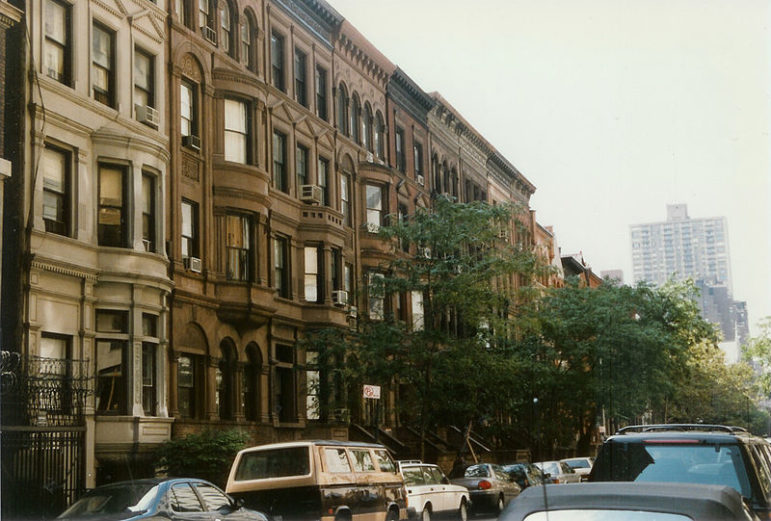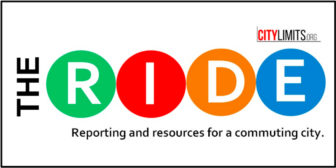
Stilfehler
The Upper West Side, an area where – in theory – people trying to avoid the congestion charge might park, taking spaces from residents. That’s assuming, of course, there are any spaces left to take.
Dozens of residents filled the auditorium at Cooper Union Thursday night at a forum hosted by Manhattan Borough President Gale Brewer, where attendees – some touting signs – offered their thoughts on congestion pricing, the proposal to charge cars a fee to drive into the borough’s traffic-snarled business district south of 60th Street.
Congestion pricing has been a central part of the state legislature’s budget negotiations, which are supposed to wrap up by April 1, though reports suggest lawmakers are still divided on the issue. So were speakers at Thursday’s forum, where proponents stressed the necessity of congestion pricing as a revenue source for the MTA, countered by opponents who expressed a litany of worries about the plan.
Among those concerns is the impact congestion pricing could have on parking. Some residents who live and drive in neighborhoods on the outskirts of the congestion zone worry that charging as much as $12 to drive south of 60th Street could result in motorists from the suburbs ditching their cars along the periphery of the zone – taking up precious street parking – then hopping on public transit to avoid paying the toll.
“Cars coming in from out of town will cause further congestion in my neighborhood, as it’s one of the closest subways stops just outside the congestion zone,” said Peter Post, an 80-year-old wildlife photographer who lives on the Upper West Side and was among those who spoke at Thursday’s forum.
Fears over how congestion pricing would impact parking aren’t new: The same concern was part of the opposing argument a decade ago, when Mayor Michael Bloomberg campaigned unsuccessfully to pass a congestion fee. At a City Council hearing last week, Councilman Fernando Cabrera told MTA representatives he fears his Bronx district will be besieged by the cars of Westchester commuters.
Get the best of City Limits news in your inbox.
Select any of our free weekly newsletters and stay informed on the latest policy-focused, independent news.
“The tendency is going to be to park in the Bronx, take the No. 4 train, the 5 or the 6, take precious parking that we keep losing,” the lawmaker said. “How will we address that? I haven’t heard a plan yet.”
But Charles Komanoff, a transportation economist and congestion pricing proponent, says these worries overestimate how many commuters would actually partake in the “park and ride” behavior Cabrera describes. By his own calculations, Komanoff estimates that only around 1,100 drivers would do so during peak weekday hours (you can read his methodology for determining that number here).
“Parking in the periphery has its own costs in dollars, time and anxiety,” Komanoff told City Limits in an email. Some commuters will opt to pay the congestion toll, rather than deal with the hassle of looking for parking in an area outside the zone and adding an extra leg to their trip via public transit.
“For committed car commuters, driving all the way into the zone will be made easier by congestion pricing because there will be less traffic and because off-street parking will likely become cheaper (since garage and parking lot owners will be chasing fewer customers),” Komanoff added. Those who do opt to park outside the congestion zone would also likely be spread out across different periphery neighborhoods, dependent on where their commute starts and ends, as opposed to being concentrated in one particular area.
Komanoff’s conclusion, he notes, is similar to one reached in a separate study conducted in 2008 by the environmental advocacy group WE ACT, which looked specifically at the potential impact congestion pricing would have on northern Manhattan and found “that few drivers will have an incentive to park and ride.”
Still, lawmakers are already proposing solutions to the parking perils that some predict could come with congestion pricing. At least two City Council members have penned bills that would set up residential parking permits in certain neighborhoods outside the congestion zone.
Richard Robbins, an Upper West Side resident, says he supports congestion pricing, testifying at Thursday’s forum that he actually wants the congestion fee zone to cover a larger portion or all of Manhattan. But he’s also worried about the possibility of commuters’ cars filling up his neighborhood, and says he supports Councilmember Mark Levine’s bill that would establish parking permits for northern Manhattan residents.
“Don’t make the Upper West Side the asthma zone,” he said. “We can’t make neighborhoods just outside the congestion pricing zone suffer from greatly increased traffic, pollution and crashes as commuters seek parking.”









2 thoughts on “Will Congestion Pricing Create Parking Problems at the Periphery?”
I don’t see too many commuters looking to park on streets in Manhattan outside the proposed congestion zone. Manhattan on-street parking is difficult due to local residents parking and the Alternate Side Parking (ASP) rules. But I do think that many commuters will try to park near the outer borough subway terminals in Queens and the Bronx even with the ASP rules.
This may happen short-term, but drivers will pretty quickly realize its not worth the hassle. They’ll either pay the fee or take transit the whole way, which is exactly the point. However, as a resident of upper Manhattan, I do like the idea of resident permits. I don’t have a car, but the streets in my neighborhood are constantly full of illegally parked cars, many of them with Jersey plates, so if this gets people to agitate for any kind of parking enforcement, that’s good!